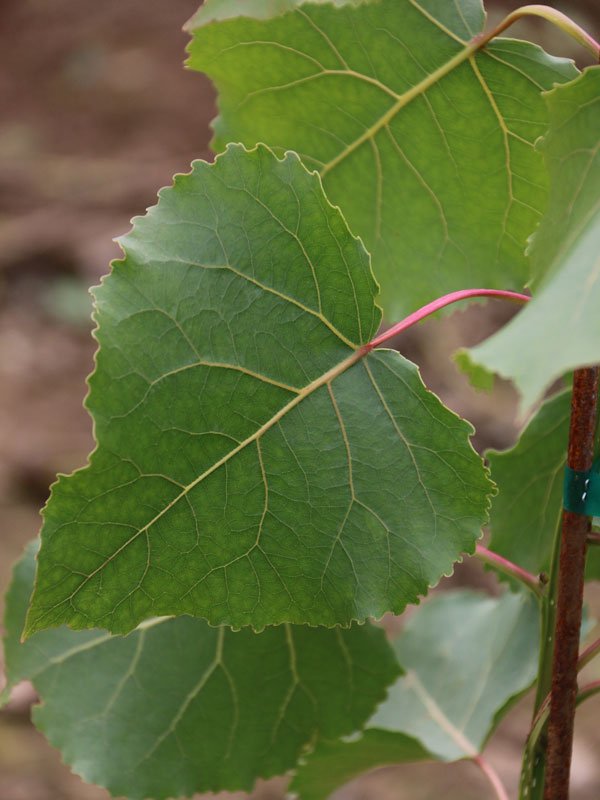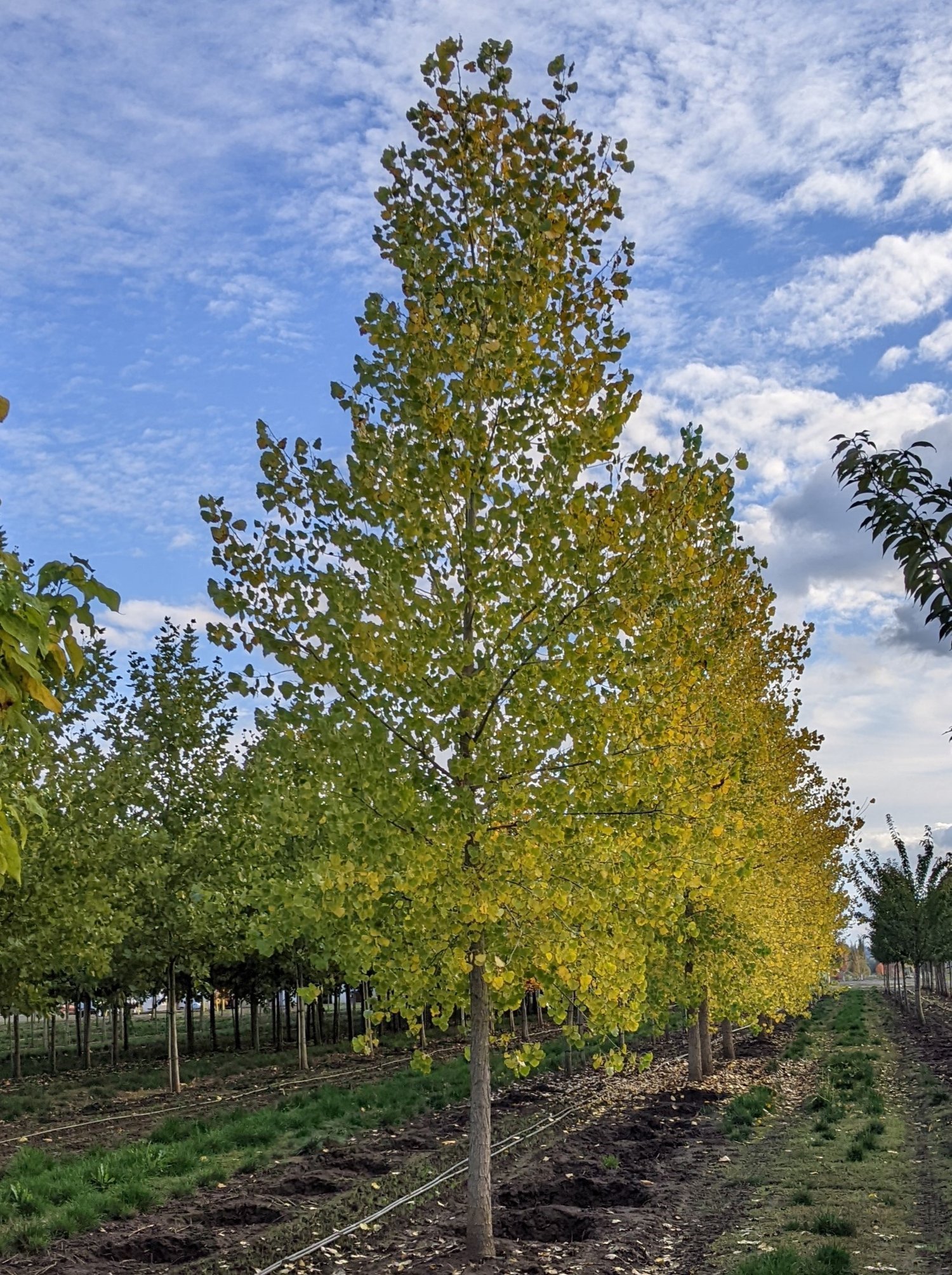Sargent Straight Plains Cottonwood
Populus sargentii 'Jeronimus'
Tree Type: large shade tree
Hardiness Zone: 4
Height: 70 to 80 feet
Spread: 40 to 50 feet
Sun: full
Soil Composition: indifferent, adaptable to soil types and pH levels
Water Needs: moderate
Growth Rate: fast
Maintenance: low
Description: A variety drawn from the native cottonwood. Large, fast-growing shade tree that is a male clone, so there are no cottonwood seeds and fluff to deal with.
Ornamental Features: A straight, uniform grower that is not often found in cottonwoods. High canopy. Triangle-shaped light green, glossy leaves with yellow fall color. Mature trees develop the typical cottonwood look with thick, rough bark with a more broad, rounded canopy form.
Planting & Growing: Plant this tree in a place with lots of room to grow. Can work well as a windbreak. Best pruned in late winter once the threat of extreme cold has passed. The fruit can be messy in the landscape and may require occasional cleanup. Tolerates both dry conditions and heavy watering. Not particular to soil type or pH levels, and is able to handle environmental salt. Highly tolerant of urban settings.
Best grown in front/back yards, and in the landscape parking strip, if greater than 8 feet wide, along city streets. Plant 15 feet from fire hydrants, ground-mounted utility boxes, fences, shrubs, private sidewalks and driveways. Plant at least 20 feet from buildings. Plant at least 20 feet from all other trees. Do not plant near overhead power lines.
Source: Fort Collins Wholesale Nursery & Echter’s Plant Finder
Populus sargentii 'Jeronimus'
Tree Type: large shade tree
Hardiness Zone: 4
Height: 70 to 80 feet
Spread: 40 to 50 feet
Sun: full
Soil Composition: indifferent, adaptable to soil types and pH levels
Water Needs: moderate
Growth Rate: fast
Maintenance: low
Description: A variety drawn from the native cottonwood. Large, fast-growing shade tree that is a male clone, so there are no cottonwood seeds and fluff to deal with.
Ornamental Features: A straight, uniform grower that is not often found in cottonwoods. High canopy. Triangle-shaped light green, glossy leaves with yellow fall color. Mature trees develop the typical cottonwood look with thick, rough bark with a more broad, rounded canopy form.
Planting & Growing: Plant this tree in a place with lots of room to grow. Can work well as a windbreak. Best pruned in late winter once the threat of extreme cold has passed. The fruit can be messy in the landscape and may require occasional cleanup. Tolerates both dry conditions and heavy watering. Not particular to soil type or pH levels, and is able to handle environmental salt. Highly tolerant of urban settings.
Best grown in front/back yards, and in the landscape parking strip, if greater than 8 feet wide, along city streets. Plant 15 feet from fire hydrants, ground-mounted utility boxes, fences, shrubs, private sidewalks and driveways. Plant at least 20 feet from buildings. Plant at least 20 feet from all other trees. Do not plant near overhead power lines.
Source: Fort Collins Wholesale Nursery & Echter’s Plant Finder
Populus sargentii 'Jeronimus'
Tree Type: large shade tree
Hardiness Zone: 4
Height: 70 to 80 feet
Spread: 40 to 50 feet
Sun: full
Soil Composition: indifferent, adaptable to soil types and pH levels
Water Needs: moderate
Growth Rate: fast
Maintenance: low
Description: A variety drawn from the native cottonwood. Large, fast-growing shade tree that is a male clone, so there are no cottonwood seeds and fluff to deal with.
Ornamental Features: A straight, uniform grower that is not often found in cottonwoods. High canopy. Triangle-shaped light green, glossy leaves with yellow fall color. Mature trees develop the typical cottonwood look with thick, rough bark with a more broad, rounded canopy form.
Planting & Growing: Plant this tree in a place with lots of room to grow. Can work well as a windbreak. Best pruned in late winter once the threat of extreme cold has passed. The fruit can be messy in the landscape and may require occasional cleanup. Tolerates both dry conditions and heavy watering. Not particular to soil type or pH levels, and is able to handle environmental salt. Highly tolerant of urban settings.
Best grown in front/back yards, and in the landscape parking strip, if greater than 8 feet wide, along city streets. Plant 15 feet from fire hydrants, ground-mounted utility boxes, fences, shrubs, private sidewalks and driveways. Plant at least 20 feet from buildings. Plant at least 20 feet from all other trees. Do not plant near overhead power lines.
Source: Fort Collins Wholesale Nursery & Echter’s Plant Finder


